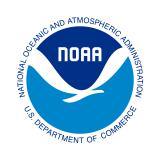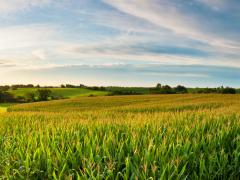For the latest forecasts and critical weather information, visit weather.gov.
Study Shows That Climate Change is the Main Driver of Increasing Fire Weather in the Western U.S.
Although wildfire is part of the natural ecosystem cycle over the western U.S., its intensity and frequency has been increasing at an alarming rate in recent decades. A new study shows that climate change is the main driver of this increase in fire weather in the western United States. And even though wetter and cooler conditions could offer brief respites, more intense and frequent wildfires and aridification in the western states will continue with rising temperatures.
During 1984–2000, 1.69 million acres burned over 11 states. It doubled in size to ~3.35 million acres during 2001–2018. In 2020, the total annual burned area jumped to 8.8 million acres, more than five times of that in 1984–2000. Such rapid increase of wildfires has become a major threat to lives, property, public health, water resource quality, and local and regional economies over the western U.S. and beyond.
The leading cause of the rapid increase of wildfires over the western U.S. is the rapid increase of surface air vapor pressure deficit, or VPD, a measure of how thirsty the atmosphere is. When VPD is higher, the air is hot and dry and draws more moisture from soil and plants, which not only increases biofuel flammability, but also reduces river flows and reservoir levels.
Previous studies have shown that the rapid increase of VPD over the western U.S. in recent decades was caused in part by climate change due to an increase in human emissions of greenhouse gases. However, it was previously not clear whether human-caused climate change or natural variation of weather patterns was the main cause. Consequently, it was not known if VPD could be expected to lessen again at some point, or further increase with continued anthropogenic warming.
In the study, published in the Proceedings of the National Academy of Sciences, researchers with the University of California, Los Angeles applied artificial intelligence to climate and wildfire data to answer this question. The study found that the warming of surface temperature contributed to 80% of the VPD increase across the western U.S between 1979–2020. Only 32% of the increase in VPD in this region during this period was caused by changes in weather patterns, which is mostly due to natural climate variability. The remaining 68% of the increase in VPD is explained by human-caused global warming. This study is part of NOAA Drought Task Force IV research funded by NIDIS through NOAA’s Climate Program Office Modeling, Analysis, Predictions, and Projections Program (MAPP). The recent NOAA Drought Task Force Report on the Southwestern U.S. Drought also showed that high VPD is a strong contributor to the 2020–2021 drought over the southwestern U.S., including California and Nevada.
The researchers also took a further look at the 2020 August Complex wildfire, the largest wildfire in California history that burned more than a million acres. Unprecedentedly high VPD occurred during the month the fire began. They found that human-induced warming likely explains 50% of the VPD, although estimates are likely to be conservative because the weather pattern change that is assumed to be purely natural in this study could be partially influenced by climate change. Indeed, the authors analyzed an ensemble of climate model simulations, which suggested that climate change accounts for 88% of the increase in VPD. Thus, the authors suggest that the actual anthropogenic contribution is likely between 68% and 88%.
This study shows that western United States has passed a critical threshold since about 2000, and human-caused climate change is now the dominant contributor to the increase of wildfire risk. It also suggests that the increase of VPD since 2000 is dominated by aridification due to climate change. Thus, even though wetter and cooler conditions could offer brief respites, VPD will continue increasing, leading to more intense and more frequent wildfires and aridification in the western states overall.
The paper is authored by Yizhou Zhuang, Rong Fu, Alex Hall, and Robert Dickinson in the Department of Atmospheric and Oceanic Sciences at the University of California, Los Angeles, and Benjamin Santer, a former atmospheric scientist at Lawrence Livermore National Laboratory.







